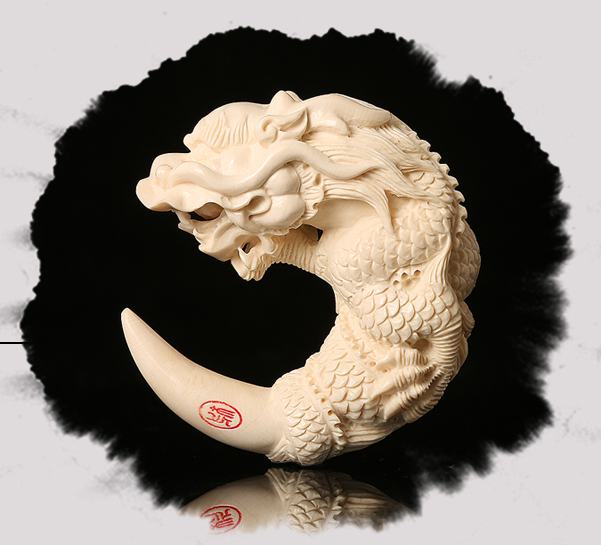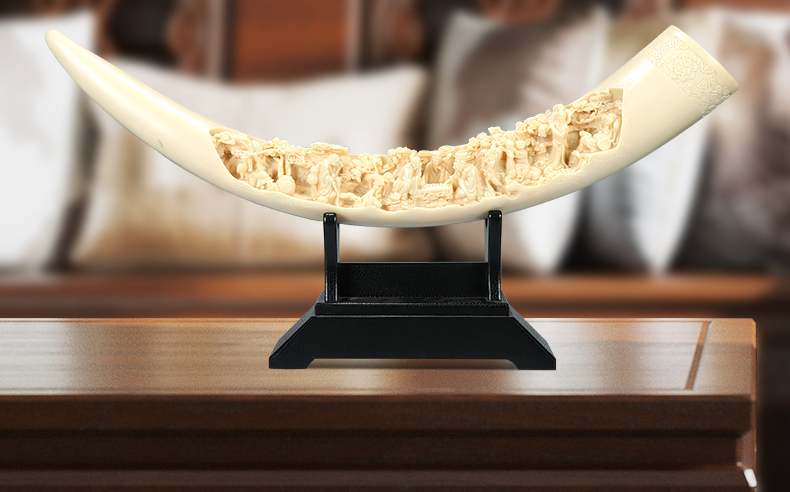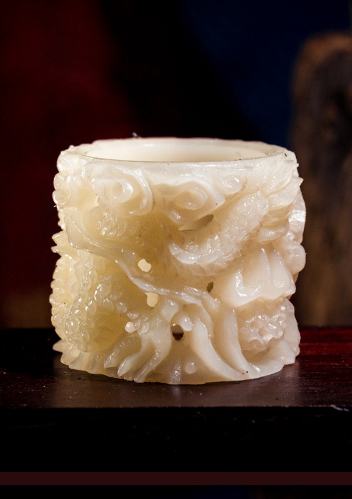The ivory expert has no problem telling the difference between real ivory and the assorted fakes. But what about the rest of us? Are there telltale signs to help us distinguish real ivory from bone? Celluloid? Resin? The answer to this is yes. And while it may take a little effort to learn, in our opinion, it is worth the time.
Types of ‘Fake’ Ivory
Commercial manufacturers over the years have looked for economic ways to duplicate the beauty of ivory. These methods have been used to produce figures, vases, jewelry, and vanity sets to name a few. And while these items may have the appeal of ivory, they certainly will not stand the test of time nor will they attain the rich patina of old ivory. Be on the lookout for:
- Resin that has been blended with ground-up ivory.
- Resin that has been blended with ground-up bone
These two types of ‘ivory’ are usually cast in a mold. Once un-molded they may or may not be cleaned by having someone remove the mold seams. Next they are stained overall with a dark color; then the high points are wiped to give the appearance of age. Another consideration is that these items will not have the weight of real ivory.
Celluloid is a man made ‘plastic’ ivory colored material typically with a wide, consistent grain. Most often used for dresser sets and other small items.
Real Ivory – What to Look For

- Elephant
- Walrus
- Hippopotamus
- Whale
- Mammoth
- Wild Boar
However, not all ivory is animal. There is a vegetable ivory which has long been used for carving. It is a nut which is the fruit of a palm tree. Many items carved from vegetable ivory are smaller items such as buttons and netsuke.
For our discussion, we’ll concentrate on elephant ivory.
We’ve mentioned that both African and Asian ivory have a grain, however, the Asian ivory is softer, whiter and has a more open grain. If you’ve ever wondered why some carvings are so very intricate, that is because they are of Asian ivory.
Taking this a step further, African ivory from the eastern side of the continent is referred to as ‘soft’, while the African ivory from the western side of the continent is referred to as ‘hard’. The soft African ivory is duller and has more moisture which means it is less likely to react to temperature changes. The hard African ivory is more translucent and glassy.
Curious Notes
- Not all elephant ivory will have obvious graining.
- Look on the bottom of figures, vases, etc. for cross-hatching. (not all ivory will have cross-hatching)
- Hippopotamus ivory has fine grain but no cross-hatching.
- Most bone carvings are ‘capped’ at the top and bottom since all bones are hollow.
- Bone is free of graining but will have pock marks (maybe brown) left from blood or marrow.
Knowing how to determine real ivory from bone, or other fakes, needs to be learned. Do some investigating at antique shops and malls. Look for different types of ivory and make note of their characteristics – graining, weight, color, cross-hatching on the bottom, color, etc. If you have items you think might be ivory, examine them in a good light, under a 15X loupe to look for graining. Finally you may want to test the ivory.
The best test for ivory is the ‘hot pin test’. The steps to follow are available at this link.








![Vintage Schwinn Bikes: [Types, Identification, and Values]](https://www.txantiquemall.com/wp-content/uploads/2022/05/5.-Schwinn-1967-Ramshorn-Fastback-Stingray-Sky-Blue-vtg-600x450.jpg)
